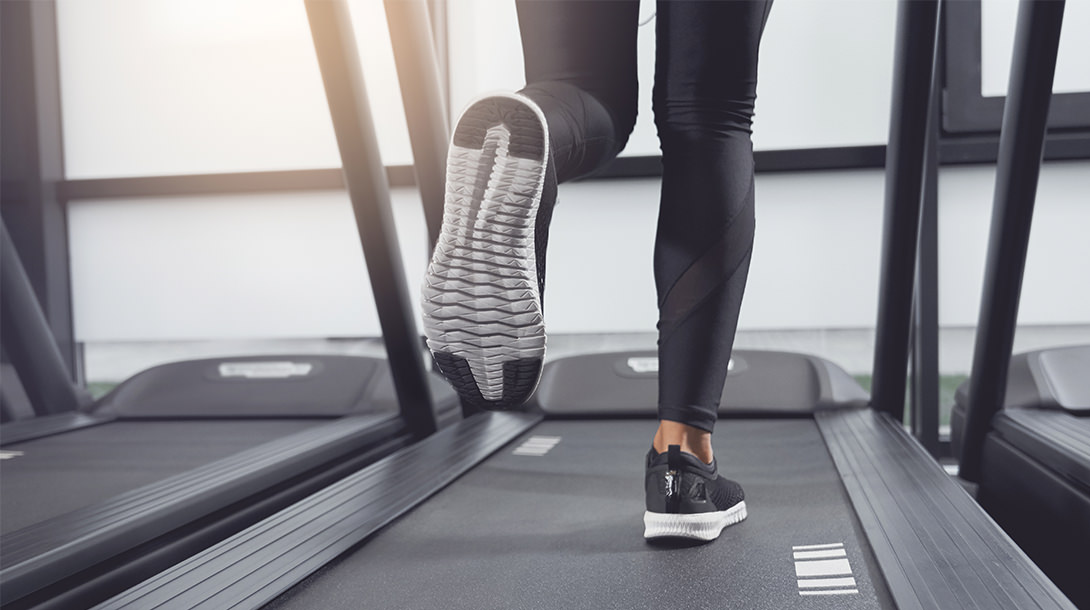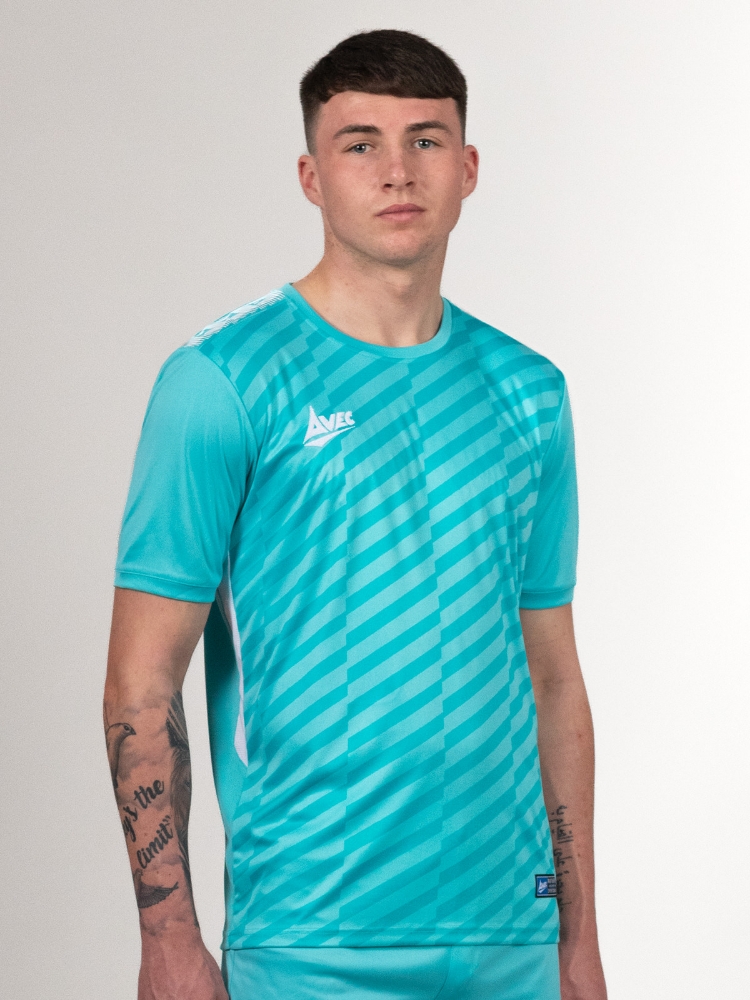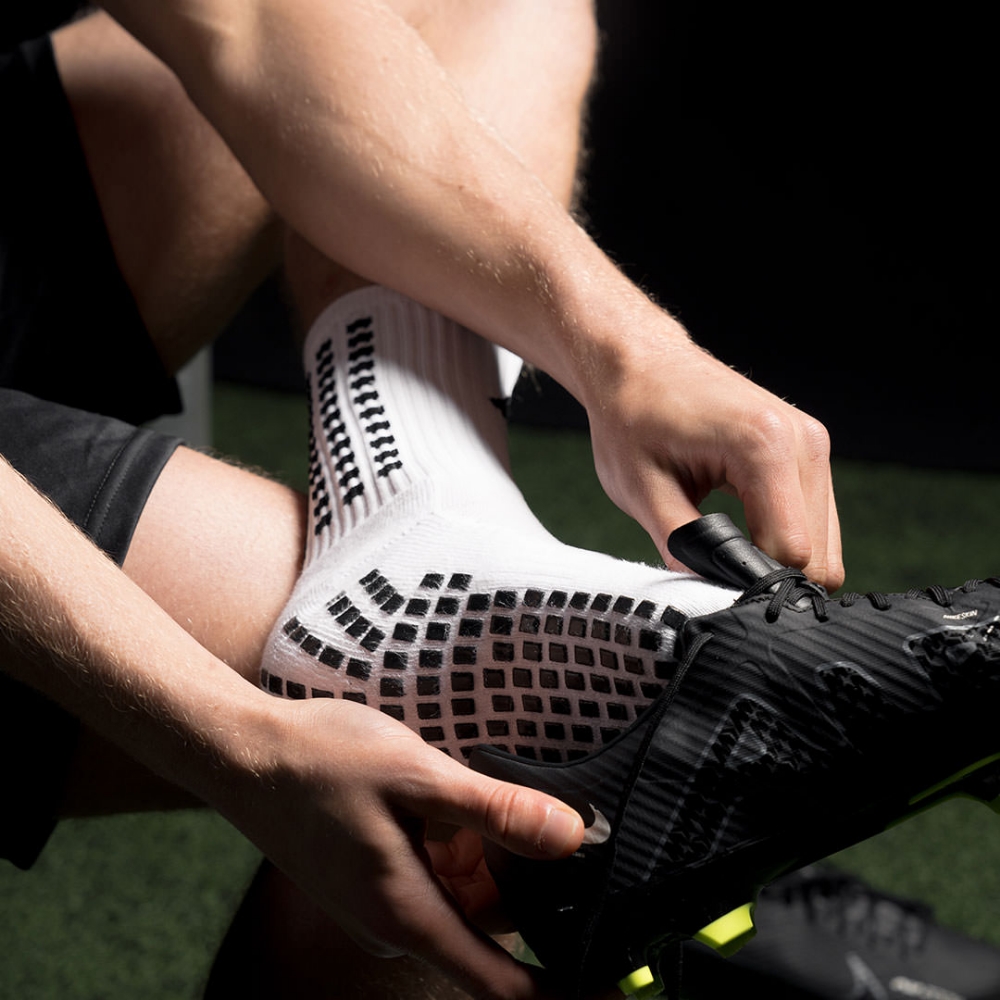
Beginner's guide to using a treadmill
Whether you’re looking to build a new fitness routine or you’re currently researching the benefits of regular cardio fitness, a treadmill is an excellent piece of equipment to help kickstart your goals. Particularly useful if you’re in an area that isn’t suitable for outdoor running or the weather isn’t working in your favour, treadmills are one of the least daunting pieces of beginner-friendly exercise equipment readily available in gyms, and regular use can offer a whole plethora of both physical and mental benefits.
In this beginner’s guide to treadmills, we’ll walk you through everything you need to know to help you get the most out of treadmill workouts. From step-by-step running workout routines, basic fundamentals of using a treadmill and recommended running gear to keep you comfortable and supported while running, at Avec Sport, we’re here to help ease you into the world of running.
Benefits of using a treadmill
While many avid gym goers favour the treadmill as a way of helping to improve overall cardiovascular health, there’s a whole host of benefits associated with regular treadmill workouts that you may not be familiar with. From managing weight to mental health improvements and more, below, we’ve listed our favourite benefits of regular treadmill use:
Suitable for all fitness levels
Whether you’re a running rookie or a seasoned sprinter, treadmills are suitable for all fitness levels. As you begin to use treadmills more frequently, you’ll likely work towards increasing your endurance, and as such, you can continue to accommodate the treadmill’s speed and gradient to adjust to your own pace and challenge accordingly. Beginners tend to start with a brisk walk that can feature gradient shifts for a more challenging uphill walk or light jog, whereas those who are more experienced can run in sprint shifts with various gradients and speed changes. The flexibility of treadmills means that it is one of the most versatile pieces of gym equipment that users of any fitness level can incorporate into their workout routine.
Ability to monitor progress and track heart rate
Unlike a lot of other cardio equipment, most traditional treadmills in a gym are equipped with built-in trackers, monitors and heart-rate sensors, so you can adjust your pace and monitor your progress as you become more accustomed to treadmill running. The metal sensors, often found on the handles of the treadmill, can give runners an indication of the level of effort of their workout and which zone they fall into. These zones are as follows:
- Zone 1 - Easy (60% of Max Heart Rate)
Zone 1 is generally referred to as low intensity running and this is often used for warm-ups or cool-downs. This zone is recommended for beginners, as this helps to improve aerobic fitness and enhances recovery and form, ultimately helping you on your way to becoming a more seasoned runner.
- Zone 2 - Aerobic (70-80% of Max Heart Rate)
Zone 2 is a moderate intensity zone, which is a recommended target area if you’re relatively new to running but want to improve your overall level of stamina and endurance. This average heart rate zone is where most runners tend to stick, as it's this pace that will allow you to run for longer distances, as zone 3, relies on a lot more stamina and perceived effort.
- Zone 3 - Hard (80-90% of Max Heart Rate)
This is the zone experienced runners use as a pointer for high-intensity workouts. Training in zone three can improve anaerobic endurance, speed and overall cardiovascular health. You may enter this zone if you prefer interval running (ie: walks and sprints consecutively) but, as a general guideline, we would recommend beginners stick to zones 1 and 2 when finding their feet with treadmill running.
There are various graphs and pointers of your target heart rate readily available on the internet, as the zones above tend to be determined by factors such as age, fitness level and general health. If you’re unsure of your target heart rate zone, many commercial treadmills allow you to enter your age and weight manually to give you a target zone, but we would always recommend consulting with a gym assistant or fitness instructor to give you more accuracy.
Readily available
Found yourself in a situation where you’re often having to wait for another gym goer to finish their reps before you make a start on your workout? Due to the compact, versatile design of the treadmill, treadmills are often available in abundance, making it easier to meet your fitness goals whenever you like. In recent years, many fitness brands have also created affordable, compact treadmills recommended for home use, which makes them a versatile exercise machine for someone who is dipping their toes into the world of running.
Joint-friendly way of exercising
Walking, jogging or running on a treadmill is often considered less risky in comparison to running outdoors. Due to the unpredictable nature of outdoor surfaces, such as debris on a track, slippery floors, broken paths and irregular surfaces, running outdoors can often lead to unforeseen injuries, particularly if you have troubles with specific joints. As treadmills offer a smooth and flat surface, this way of running is often recommended for those with injury concerns.
Offers both physical and mental benefits
While running is often praised for its ability to increase cardiovascular fitness, weight management and endurance training, running can also have a positive effect on your mental health. Frequent running, whether outdoors or on a treadmill, is scientifically proven to release endorphins and serotonin, chemicals which work to alleviate signs of stress and low moods.
How to use a treadmill
Using any piece of fitness equipment for the first time can always be daunting, luckily, treadmills are one of the most straightforward pieces of cardio equipment available and the interface of most commercial treadmills is simple and easy to pick up. While we would always recommend making use of a gym induction to familiarise yourself with your gym’s equipment, or, if using a treadmill at home, consulting your treadmill’s handbook - as a general guide, we would recommend beginning with these simple steps:
-
Familiarise yourself with your treadmill’s functions
Make an effort to get to grips with all features specific to the treadmill model you’re using. This will typically involve up or down arrows for speed and incline settings and program settings that will have pre-installed workout routines (such as 5K runs, fat burn sprints, etc), as well as start and stop buttons. There’ll likely also be a safety clip, which runners can attach to their body which, once pulled, will override your workout and allow the treadmill to come to a complete stop in the event of you slipping or losing balance.
-
Invest in appropriate running clothing
Arguably one of the most important aspects of running is investing in clothes that keep you comfortable, cool and supported. While we’ve previously covered what runners should look out for when it comes to choosing suitable running clothes in our ‘Best Running Clothes Guide’, below, we’ve summarised our recommendations to make your transition to treadmill running as fuss-free as possible.
Lightweight, breathable clothing
Consider investing in lightweight clothing to allow for freedom of movement to not distract you while running. Our Evolve Pro Jerseys at Avec Sport are built purposely for runners and are crafted from a quick dry material to prevent any feelings of discomfort, so you can stay focused on reaching your running goals.

Evolve Pro 3 Jersey in Hyper Blue £14.95
Quick dry fabrics
Since you’re likely to work up a sweat on the treadmill, investing in running gear that has properly ventilated panels and is made of fabrics that dry quickly is essential. At Avec Sport, our Running Clothes range is built with runners in mind, to offer a reliable range of moisture-wicking, run-ready clothing that can allow you to train both outdoors and indoors with ease.
Choose comfortable, supportive footwear
If you can, we’d recommend a GAIT analysis to track how you run and find the right pair of trainers that can provide both support and comfort as you become more familiar with treadmill running. However, if you’re unable to do this, as a pointer, we would recommend opting for a pair of well-fitting running trainers, built with proper arch and ankle support to prevent any risk of injury. As well as this, we’d advise runners to not overlook investing in good quality pairs of comfortable, moisture-wicking socks, as a poor choice of socks may lead to blisters and unnecessary discomfort.

Classic White Grip Socks £6.70
Treadmill workouts for beginners
For beginners, it’s important to build a treadmill workout routine that suits your personal endurance capability, as you’ll run the risk of feeling overwhelmed if you, quite literally, run before you can walk.
While we’ll always recommend consulting your GP before starting any new workout routine, especially if you have any health concerns, below, we’ve summarised a beginner-friendly treadmill workout routine. With this routine, as you become more accustomed, you can adjust speed and incline accordingly to continuously work and improve your cardio levels.
- Walk to warm-up (5 minutes)
Equally as important as your run, warming up prevents the risk of an injury and is a vital part of any treadmill running routine. For this, we’d recommend starting at a slow, flat pace to gradually increase your heart rate
- Jogging interval (10 minutes)
Now you’ve successfully warmed up, we’d recommend a jogging interval. This would typically involve 2-minutes of a brisk walk or slow jog, then a minute of recovery. Keep repeating this pattern of run/recovery for ten minutes as you gradually build your stamina.
- Incline challenge (5 minutes)
While this is completely dependent on your ability, if you’re looking to improve your overall endurance and are considering treadmill running as a means of weight management, then incorporating an incline to your running routine can add more effort to your run. Keep at a steady pace for five minutes as you start, and gradually bring down the incline over these five minutes to lead you nicely into a cool-down period.
- Cool-down (5 minutes)
Again, just as important as a warm-up, cool-down periods allow you to return to a normal heart rate and can also prevent the risk of injury. Gradually bring your treadmill speed down to a slow pace, while doing this, we’d recommend re-hydrating. Afterwards, step off the treadmill and stretch out your calves, quads and hamstrings.
Upgrade your running workout gear with Avec Sport
From smart, moisture-wicking body fit running jerseys, to arch support ankle socks and more, at Avec Sport, our running clothes collection features a wide range of treadmill-suitable gear to support you on your running journey. Whether you’re upgrading your running wardrobe, or looking to purchase reliable pieces for a loved one or running group, most of our running essentials have the unique ability to be personalised, to add an extra, personal touch or sign of encouragement. Explore the full range of treadmill running clothing and accessories at Avec Sport.

